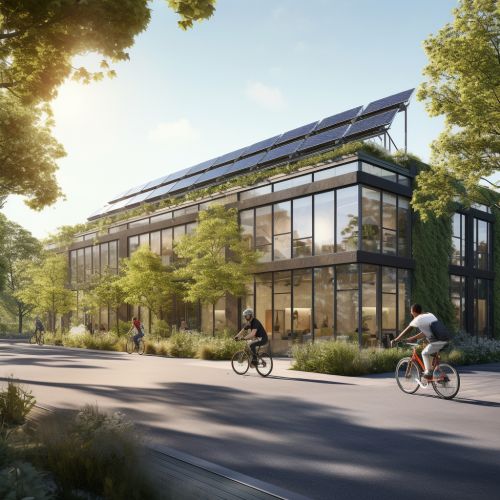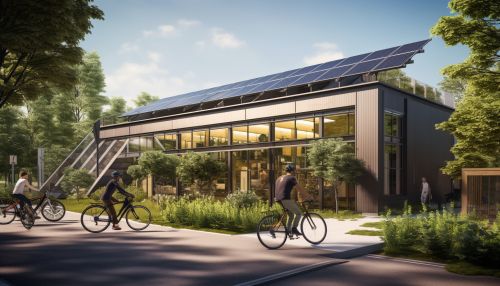Sustainable design
Overview
Sustainable design, also known as environmental design, is a design philosophy that seeks to minimize the negative environmental impact of buildings, products, and systems by enhancing efficiency and moderation in the use of materials, energy, and development space. It is a multidisciplinary approach that involves a range of stakeholders, including architects, engineers, planners, scientists, and many others.
Principles of Sustainable Design
Sustainable design is guided by several key principles, including:
- Efficiency: This involves the optimal use of resources to achieve the desired outcome. It includes energy efficiency, water efficiency, and material efficiency.
- Renewable Energy: Sustainable design encourages the use of renewable energy sources such as solar, wind, and geothermal energy.
- Life Cycle Assessment: This is a method used to evaluate the environmental impact of a product or system over its entire life cycle.
- Waste Minimization: This principle involves designing products and systems in a way that reduces waste and promotes recycling and reuse.


Sustainable Design in Architecture
In architecture, sustainable design involves the creation of buildings that are energy-efficient, healthy, and comfortable for occupants, and that have a minimal impact on the environment. This can be achieved through various strategies, such as:
- Passive Solar Design: This involves designing buildings to take advantage of the sun's energy for heating and cooling.
- Green Roofs: These are roofs covered with vegetation, which can help to reduce heat loss and energy consumption, improve air quality, and provide habitat for wildlife.
- Rainwater Harvesting: This involves collecting and storing rainwater for use in irrigation or other purposes.
- Natural Ventilation: This involves designing buildings to maximize airflow and reduce the need for mechanical ventilation.
Sustainable Design in Product Design
In product design, sustainable design involves creating products that are durable, recyclable, and made from renewable or recycled materials. This can be achieved through strategies such as:
- Design for Environment: This involves considering the environmental impact of a product at all stages of its life cycle, from design to disposal.
- Cradle-to-Cradle Design: This is a design philosophy that encourages the creation of products that can be fully recycled or composted at the end of their life.
- Ecodesign: This involves integrating environmental considerations into the design process, with the aim of reducing a product's environmental impact.
Challenges and Criticisms
While sustainable design has many benefits, it also faces several challenges and criticisms. These include:
- Cost: Sustainable design can be more expensive than traditional design methods, particularly in the short term.
- Greenwashing: This is the practice of making misleading or unsubstantiated claims about the environmental benefits of a product or service.
- Standards and Certification: There is a lack of universally accepted standards and certification systems for sustainable design.
Future Directions
The future of sustainable design lies in further integrating sustainability principles into all aspects of design and construction. This includes the development of new materials and technologies, the adoption of more holistic design approaches, and the creation of policies and regulations that support sustainable design practices.
